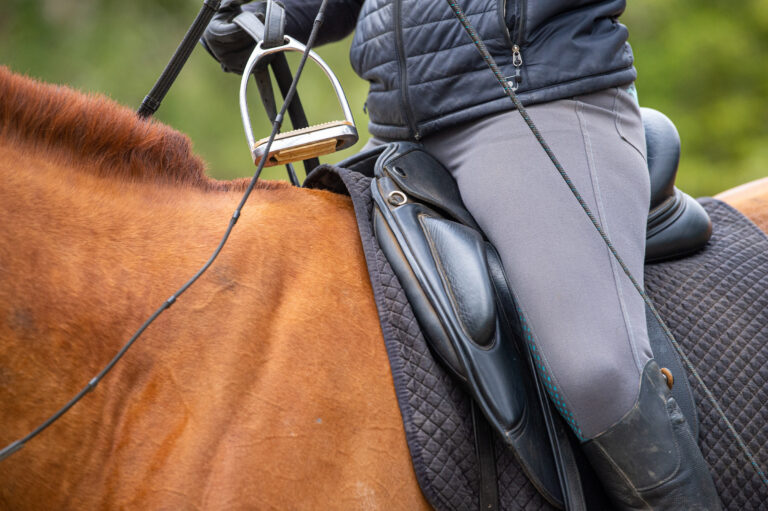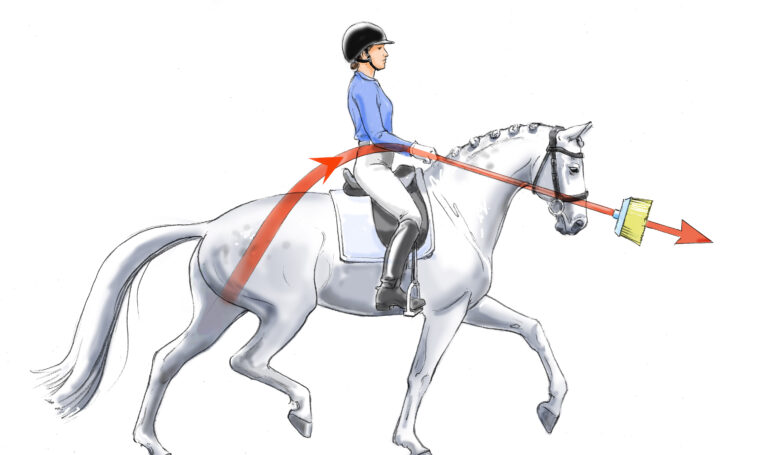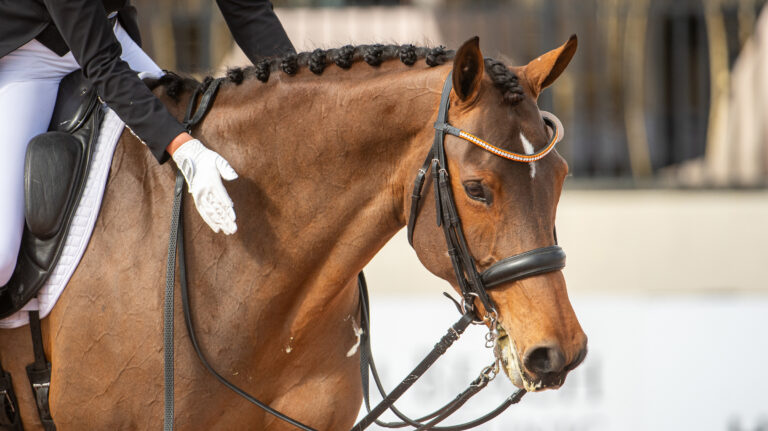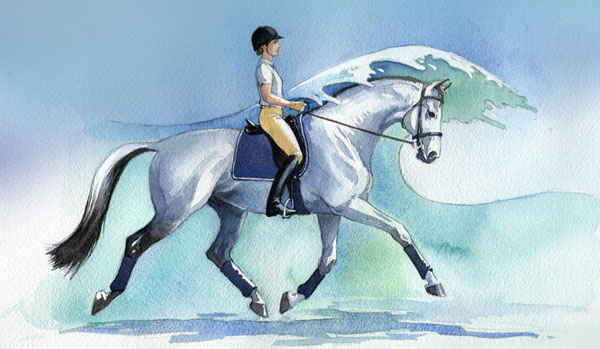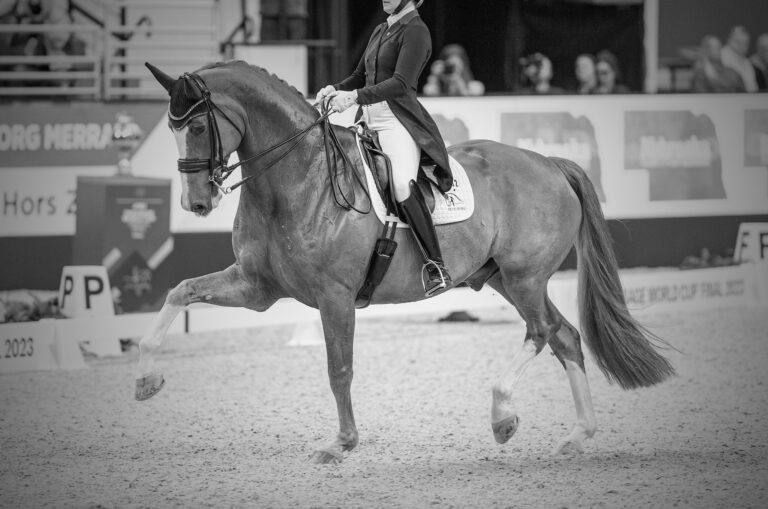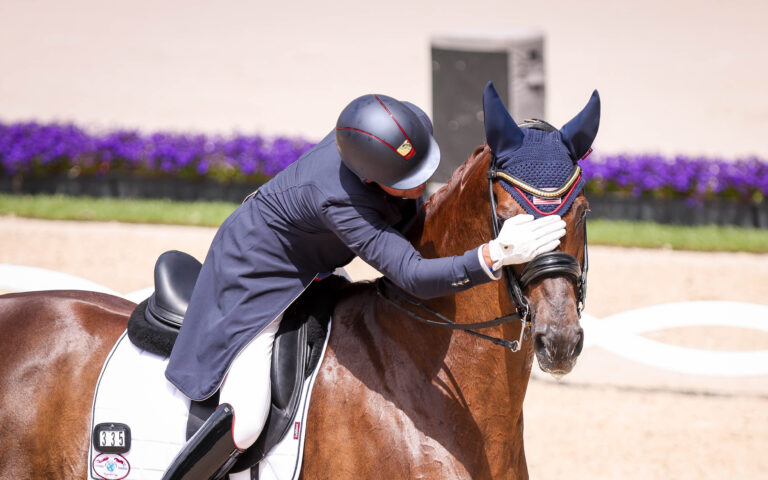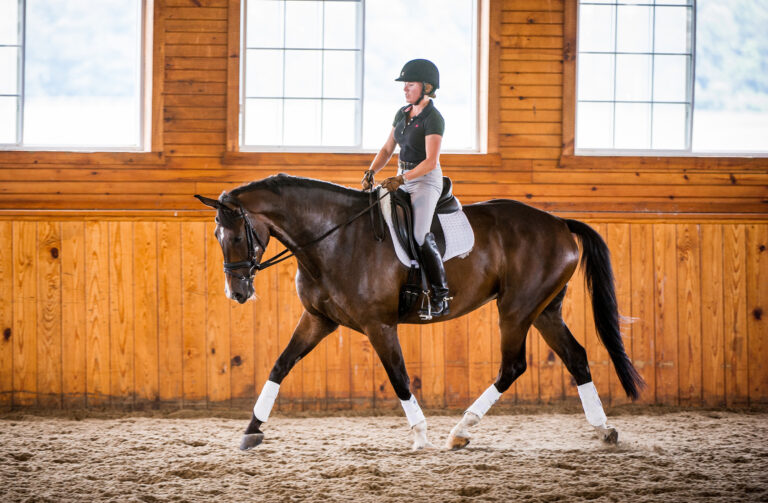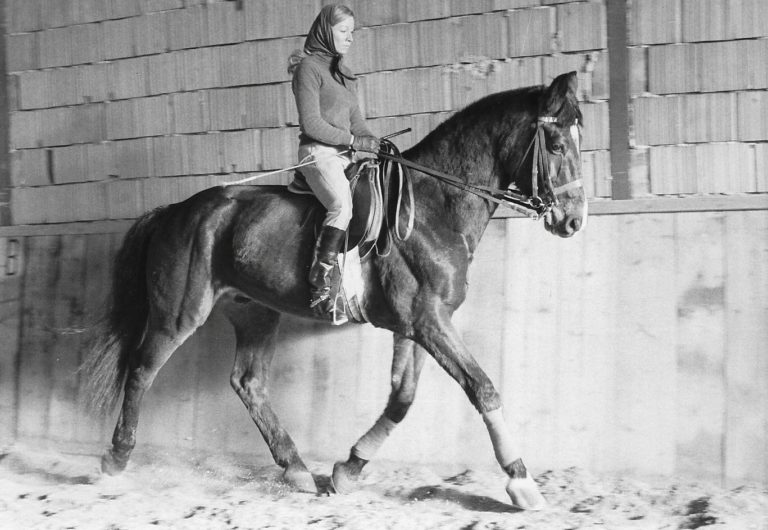gelding, Baltimore. (Courtesy Cristina Kayvon-Pierce)
This photo shows Cristina Kayvon-Pierce competing at First Level on her 17-hand Trakehner gelding, Baltimore. This horse shows a nice frame for a First Level test. He appears to work with a willing and forward attitude. This forward attitude, however, is balanced a bit too much on the forehand.
If you look carefully at the picture, you’ll see that his hind legs are not stepping far enough under his rider’s weight. If you were to draw a vertical line up from his hooves, you would notice that the hind leg is behind the rider and the near front leg is well under the rider. This signals that Baltimore is pushing off his hind legs too much. Notice that his rear hind leg is lifting off the ground a bit higher and faster than the front leg.
To improve this, Cristina needs to help Baltimore to lift his chest and shoulders into a better self-carriage.
Cristina’s seat shows a light forward position and she is most likely performing rising trot. Her balance line looks correct with her head over her feet, but I do notice some unwanted tension. Her heels are pulled up, which then pushes her knee up and moves her hips toward the back of the saddle. This causes some tension in her shoulders, neck and arms.
Her arm and hand position look correct, but it looks to me as if Baltimore is leaning a bit into the contact. This connects to the larger picture of the energy line going a bit downhill.
In a lesson, I would advise Cristina to picture the rising trot movement as a wave moving forward up and forward down, so that her sitting-down movement is a forward movement in her pelvis. Then it will be easier for her to keep her upper body more upright and her legs longer with a deep heel. To get a better feel for this she can try this: While your horse is walking, stand up in your stirrups with your upper body as vertical as possible. If you need help, you can use one hand to push off the back of the saddle. You can then feel how a long leg allows your hips to swing forward, whereas a short leg (with ankle pulled up) will block forward movement in your pelvis.
With this small but effective correction in Cristina’s seat, she will gain more core stability and she might find that this alone will help Baltimore change his balance and lift his shoulders more. He does not look unwilling to do so.
Then, Cristina should ride many transitions and half halts and concentrate on the most important thing: giving to complete the half halt. The German term Überstreichen, where both hands push slightly forward releasing the contact completely for a few strides, will help the horse understand that he cannot lean on the contact but instead needs to provide more self-carriage.
It might be a challenge for Cristina to ride such a tall horse, but remember that correct upper-body balance can be more effective than long legs. I know riders who ride without legs completely and their horses step nicely and willingly under the weight.
I am positive that Cristina and Baltimore can achieve more lightness and uphill tendency in their movement and enjoy many further adventures exploring the world of dressage.
Susanne von Dietze is a leader in equestrian biomechanics. A physiotherapist, licensed Trainer A instructor and judge for dressage and show jumping, she gives lectures and seminars throughout the world, including at the prestigious German Riding Academy in Warendorf. She is a native of Germany and now lives with her husband and three children in Israel, where she competes at the international level. She is the author of two books on the biomechanics of riding: Balance in Movement and Rider and Horse, Back to Back. Find her books at www.EquineNetworkStore.com.
Send Your Photo!
You can submit your high-resolution dressage photo for critique (300 dpi and 4 by 6 inches in size). Or you can send your photo with a link to a short video. Email to [email protected]. Turnout in dressage show or clinic-appropriate attire is encouraged. Don’t forget your helmet!


